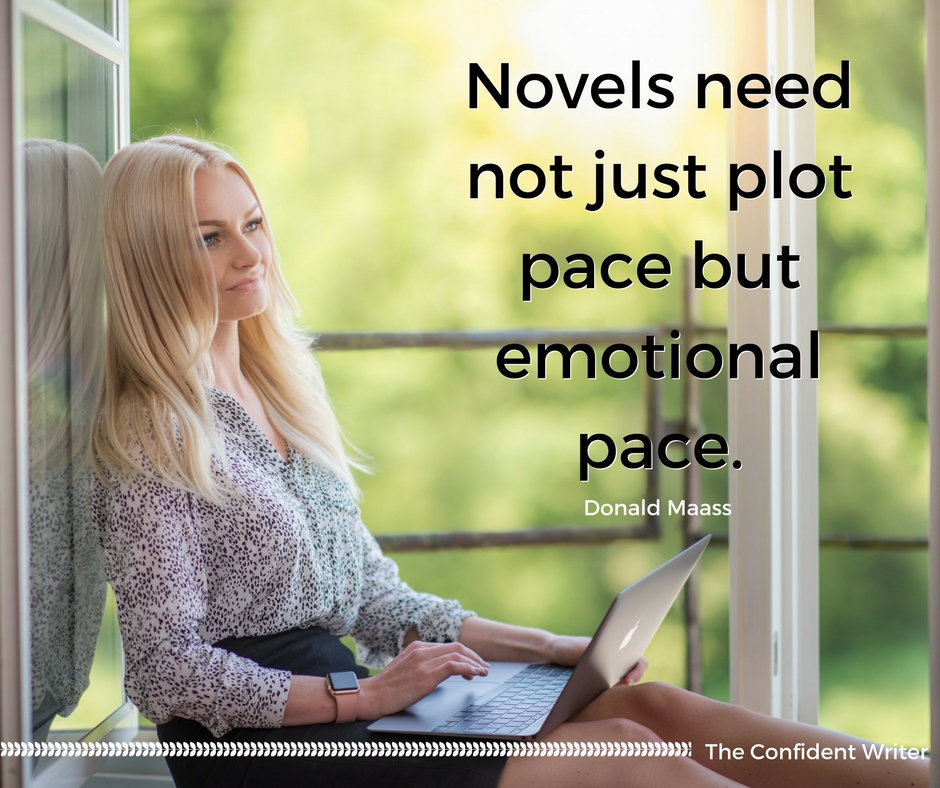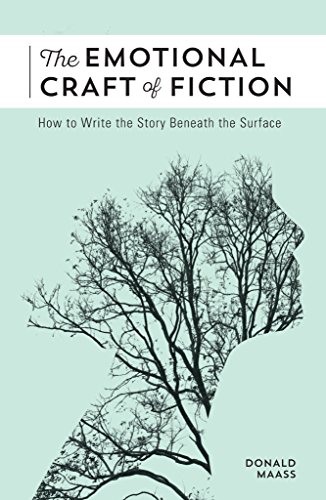
This is part 5 in a 6 part series on getting a manuscript ready for beta readers. This is a systematic process where you read through your work 5 times and each pass focus on a specific element. This makes the editing more efficient and consistent. In the end, you’ve got something so much better than what you first envisioned when you sat down and typed that first word in chapter one (or wherever you started).
You can’t skip ahead. There may be early layers that you work through in the planning stage, but confirming the structure underpinning these beginning layers is crucial. If those first layers aren’t solid, the rest is a house of cards. If you don’t have a first draft or are struggling to complete one, this post on fast drafting might help.
Let’s recap:
Prep Work: Goals
Layer 1: Plot
Layer 2: Scenes and Sequels (Pacing)
Layer 3: (Weakness) Plus Characterization
Layer 4: Emotions (you are here)
Layer 5: Consistency
The emotional punch is why readers pick up a book. They want to be entertained, to escape, to sigh and laugh and cry–this is where all that magic gets examined. In this layer, what you’re doing is making stylistic choices. So what I mean by that is there’s no right or wrong. You need to choose where to intensify the emotions, intensify the introspection, slow the pace and ask your characters some hard questions. I find it most helpful to get to a place where I won’t be interrupted for an afternoon or two and get down and dirty with this character.
This layer follows the layer on characterization intentionally, because you should know your character inside and out at this point. If you are working your way through this layer and realize you don’t have an answer to something, you might have a problem you haven’t spotted in a previous layer.
Be Objective…
It’s so important to be objective at each stage of this intense revision process. If you need to take a few days off between each layer go ahead and do that. Set yourself a specific time away where you’re going to work on other projects and then come back to it with fresh perspective.
I purchased Donald Maass’ book The Emotional Craft Of Fiction and basically work through the questions he has throughout the book. I sit with a notebook and force myself to answer two or three questions from each chapter.
Here’s an example of the kinds of questions he asks:
Select any moment in your story when your protagonist feels something strongly. Identify the feeling. Next, ask your protagonist, ‘What else are you feeling at this moment?’ Write that down, too. Then ask, ‘Okay, what else are you feeling now?’ Write that down. Now begin to work with that third, lower-layer emotion. What does it feel like to have this emotion? Is it good or bad to feel this way? Why? What would a better person feel instead? Justify this feeling – it’s the only possible thing to feel at this moment and here is why.
Here’s another:
Choose any small thing that happens somewhere in the middle of your manuscript. When you find it, write down your answers to the following questions: This small event is symbolic, but symbolic of what? What does it mean to your POV character personally? What meaning might anyone see if they bothered to look? How is your POV character’s understanding of himself changed in this moment even in a small way?
This won’t be easy. This is where you have to really pause. You have to simultaneously be objective and think through your story but also give yourself freedom to really FEEL your way through key scenes in your manuscript. I find this layer the most intense and physically draining.
Be Strategic…
Sorry to ruin the magic if you thought things like symbolism or emotional layering happened organically in the first draft. In this layer you are making stylistic choices, they must be intentional. You may find in this layer that there are layers of emotions to explore you hadn’t even thought of. You may find your character sharing things with you that you’d never thought to ask. Once you work through these questions, take those small snippets of emotional layering and skip to those places and edit accordingly. It might be as simple as changing a few words or as much as adding a paragraph. This layer shouldn’t change the plot or character arc but intensify the emotional arc.

When To Go Deep And When To Tell
In Layer 2 you examined and tweaked the pacing of your story. This layer deals more with the emotional pace. It’s OK to slow the action for a moment to add an emotional throat punch for readers. It’s OK to tell and use a shallow POV for specific effects such as showing your character is so overwhelmed they’ve stopped feeling anything at all. This is effective to show a character intentionally stepping away emotionally from a person or situation. That moment the character realizes their small place in a giant cog or puzzle, when they realize the consequences of failure or what they have to lose. Keep these emotional punches brief, a paragraph or two at the most.
You might find it effective in a moment of high tension to really back off the introspection and use a more wide angle lens to tell this part of the story. That could last for a mere sentence before you’re back to the action. You’re the director of a film and you can use showing and telling like a director uses his lens. They do with a brief shot of a actor’s face, a pause in the action for grief to flicker across their features–that’s what I’m talking about here.

How It Looks In Action…
Here are some questions I asked the protagonists in the novel I most recently edited to give you an idea of how I used the questions in the book as a jumping off point to intensify the emotional punch of the story. The character’s answers as I recorded them are in parenthesis:
- Where are you most concerned about how others view you? What are you most afraid of? (*Points to a scene.* Will they still follow me? Will they think I’m a day late and a penny short?) What does that feel like? (Shame – they’ve been doing their duty and giving their lives for something I chose to ignore.) BOOM!
- How would a braver person act in this situation? How would a more reckless person respond to this injustice? (He needs to DO something for the sake of those girls. Stop blaming others for his inaction. Stop hiding behind indecision.) What do you want to say to him? What are you afraid to say? (I need to stand up for her no matter what it costs me right now.) BOOM!
- What’s something small that happens that’s symbolic of something much bigger? (When we take a moment to bandage each other up after the big fight.) What’s it symbolic of? What’s really being said without words? (It’s symbolic of forgiveness and responsibility. It means acceptance, a truce, humility.) How did that change you? (I set aside my first impressions and gave him the freedom to show me who he really is. Who he wants to be.) What did he teach you? (That the scars we have aren’t failures but show we survived what should have taken us down. That setting aside my first impressions scares me because if he’s not what I thought he was he might be someone I could love.)
- What’s the worst thing that happens to you? The most traumatic, damaging, not-sure-you’ll-survive event? (This – points to scene at the 75% mark.) What else are you feeling? (Angry at myself because I couldn’t stop it.) What else? (Powerless because I couldn’t fight.) What else? (Unseen and unheard again. Worthless, not worth searching for.) That’s shame – what primary emotions are fueling that shame? (Fear, sadness, failure, embarrassment, regret, self-blame…) BOOM!
- When did you learn something that surprised you? That made you stop and rethink something you’d thought to be true about yourself? (Here – points to a scene.) What were you feeling? (Anxious – new place, wanted to impress him — wanted him to be proud of me.) What are you afraid of? (That he’ll second guess his decision to marry me.) What do you want right now that would help you feel less anxious? (Be more in control. Desperate for control.) Is that what you’re really feeling or is that a cover up for something? What is seeking control helping you ignore? (I really want to feel safe. I’ve confused control with security.) BOOM!
It’s important to understand the difference between primary and secondary emotions, or emotions and feelings if that’s easier to understand. For the rest of this week, you can get my Writing Emotions In Layers 5-day E-course for free here.
How are you doing so far with these editing layers? I’d love to address any questions you might have in a future blog post. Send me an email or post the question below!
Been told you should learn Deep Point Of View? Had an editor or critique partner tell you to “go deeper” with the emotions in your fiction? Looking for a community of writers seeking to create emotional connections with readers? Check out the Free Resource Hub and then join the Going Deeper With Emotions In Fiction Facebook group.


Comments (4)